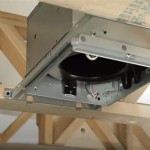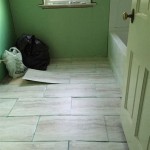How Much Does It Cost To Rough In A Basement Bathroom?
Roughing in a basement bathroom, the initial phase of plumbing and electrical installation, involves setting the foundation for future functionality. Understanding the costs associated with this essential step is crucial for budgeting and planning a basement renovation. This article explores the various factors that influence the price of roughing in a basement bathroom, providing a comprehensive overview of potential expenses.
The definition of "roughing in" typically includes running the necessary water supply lines (both hot and cold), installing drain pipes for the toilet, sink, and shower/tub, and establishing the primary electrical circuits for lighting, ventilation, and outlets. It also often includes permits and inspections required by local building codes. The cost varies drastically depending on several factors, including the size and complexity of the bathroom, the distance from existing plumbing lines, the type of materials used, and labor rates in the specific geographic location. The presence of existing plumbing access, soil conditions, and the need for a sewage ejector pump also play pivotal roles in the final price assessment.
Key Cost Influencer 1: Plumbing Labor and Materials
Plumbing costs are often the most substantial portion of a rough-in budget. The complexity of the plumbing installation directly impacts the labor required, and therefore, the overall expense. The first factor is the proximity of the new bathroom to existing plumbing lines. If the new bathroom is situated far from the main water and sewer lines, more pipe, more labor, and potentially more advanced methods (like trenching through concrete) will be necessary. Running new water lines can be relatively straightforward if the existing plumbing is easily accessible. However, if the main water line is difficult to reach or requires significant modifications, the cost will increase. Similarly, connecting to the sewer line can be exceptionally costly. If gravity can facilitate drainage, connection will be easier. If the bathroom is located lower than the main sewer line, a sewage ejector pump will be required, adding significantly to the material and installation costs.
The type of plumbing materials also affects the overall cost. Copper piping, while durable and long-lasting, is typically more expensive than PEX (cross-linked polyethylene) piping. PEX has become increasingly popular due to its flexibility, ease of installation, and resistance to freezing. PVC (polyvinyl chloride) or ABS (acrylonitrile butadiene styrene) piping are generally used for drain lines and are relatively inexpensive materials. However, the quantity of these materials required, based on the bathroom's design and distance from existing lines, will ultimately impact the cost. The cost associated with fittings, valves, and connectors also contributes to the total plumbing material expense. These seemingly small items can add up significantly, especially when complex plumbing layouts are involved.
The need for a sewage ejector pump represents a significant additional cost. These pumps are necessary when the bathroom's drain lines are lower than the main sewer line, requiring the waste to be pumped upwards to connect to the main drainage system. Ejector pumps themselves range in price, from several hundred to well over a thousand dollars, depending on their capacity and features. Installation involves not only connecting the pump to the drain lines and sewer line but also providing a dedicated electrical circuit and proper ventilation. The combined cost of the pump, materials, and labor for installation can easily add several thousand dollars to the rough-in project.
Finally, the local plumbing labor rates are a critical cost driver. Hourly rates for licensed plumbers vary considerably depending on geographic location, experience, and demand. Obtaining multiple quotes from qualified plumbing contractors is strongly advised to ensure a competitive price and to understand the scope of work included in each estimate. Be sure the quotes are clearly detailed and that they break down material costs from labor costs.
Key Cost Influencer 2: Electrical Work and Considerations
The electrical portion of roughing in a basement bathroom includes running new wiring for lighting, outlets, and ventilation. Compliance with local electrical codes is paramount, and certain circuits require ground fault circuit interrupter (GFCI) protection, especially near water sources. The complexity of the electrical work, material selection, and labor rates influence the overall cost.
The number of electrical circuits required for the bathroom depend on the planned fixtures and accessories. A basic bathroom typically needs at least two separate circuits: one for general lighting and the exhaust fan, and another dedicated circuit for the outlets to accommodate hair dryers or other appliances. If a heated floor, a jetted tub, or a high-powered ventilation fan is planned, additional circuits are necessary. Each new circuit requires running new wiring from the electrical panel, installing circuit breakers, and ensuring proper grounding. The distance from the electrical panel to the bathroom also affects the material and labor costs. The longer the wire run, the more material is required, and the more labor is involved in installation.
The choice of electrical materials also influences costs. The type of wiring (e.g., Romex or conduit), the number of outlets and switches, and the type of light fixtures all impact the material budget. GFCI outlets, which protect against electrical shock, are mandatory in bathrooms near water sources and are more expensive than standard outlets. The selection of recessed lighting can also add to the cost, depending on the quantity and style. It's pertinent to consult with an electrician to ensure that all electrical components meet code requirements and provide adequate functionality.
Ventilation is an important electrical consideration. A bathroom exhaust fan is essential to remove moisture and prevent mold growth. The size and power of the fan will determine the electrical requirements. The fan requires a dedicated electrical circuit and proper venting to the outside. While a basic fan is relatively inexpensive, high-end models with features like humidity sensors or integrated lighting can increase the cost. The labor involved in installing the fan, running the electrical wiring, and connecting the exhaust duct to the outside significantly contributes to the overall expense. The cost to install ducting is important since incorrect venting can cause the fan to recirculate the moist air within the bathroom.
Electrical labor rates, like plumbing rates, vary widely based on geographic location and the electrician's experience and credentials. It is essential to hire a licensed electrician to ensure that all electrical work is performed safely and in compliance with local electrical codes. Obtaining multiple quotes from qualified electricians is advisable to compare prices and ensure a fair estimate. Ensure that the quotes outline the specific tasks included, such as running new circuits, installing outlets and switches, and wiring the exhaust fan.
Key Cost Influencer 3: Site Preparation and Permits
Site preparation, which includes tasks like concrete cutting or excavation, and required permits, adds to the total rough-in cost. These costs are often overlooked but can be substantial, especially if the existing basement floor requires significant modifications to accommodate plumbing lines.
If the existing plumbing lines are located under the concrete floor, cutting into the concrete to access and connect to them is necessary. This concrete cutting can be labor-intensive and require specialized equipment, adding to the overall cost. The amount of concrete that needs to be cut depends on the distance from the existing plumbing and the layout of the new bathroom's drain lines. After the plumbing is installed, the concrete needs to be patched and smoothed, adding to the material and labor costs. Furthermore, the disposal of concrete debris can also incur additional charges.
Excavation may be required if the bathroom's layout requires plumbing lines to be installed beneath the existing floor level. This task involves digging trenches in the concrete to accommodate the new plumbing, and then backfilling after the plumbing is installed. Excavation can also be necessary for installing a sewage ejector pump if the pump's basin needs to be recessed into the floor. The cost of excavation depends on the amount of material that needs to be removed, the accessibility of the site, and the method used (manual or mechanical). The cost to get rid of the debris is also important to factor in.
Permits are crucial for ensuring that the rough-in work complies with local building codes and regulations. The cost of permits varies depending on the municipality and the scope of the project. Permits typically cover plumbing, electrical, and building aspects of the rough-in. Obtaining the necessary permits and scheduling inspections is a critical step in the process. Failing to obtain permits can result in fines, stop-work orders, and the need to redo non-compliant work. The contractor performing the rough-in work is usually responsible for obtaining the necessary permits. Ensure that the permit costs are clearly outlined in the contractor's estimate. It is usually best practice to get a permit to ensure the safety of the work and also protect the investment.
In summary, the cost to rough in a basement bathroom is influenced by a variety of factors. These factors include the complexity of the plumbing and electrical work, the distance from existing plumbing lines, the type of materials used, and the local labor rates. Additionally, site preparation tasks, such as concrete cutting or excavation, and the cost of permits contribute to the overall expense. Obtaining multiple quotes from qualified contractors and carefully reviewing the scope of work included in each estimate is essential for budgeting and planning a successful basement bathroom renovation.
How Much Does It Cost To Install A Bathroom In The Basement Quora

Cost To Add A Basement Bathroom Bright Green Door

How Much Does It Cost To Rough In Plumbing For A Bathroom Find Out

Basement Bathroom Cost These 5 Items Will Determine Your
How Much Does It Cost To Rough Plumb A Basement Bathroom Quora

Cost To Add A Basement Bathroom Bright Green Door

How Much Does It Cost To Add A Bathroom In The Basement
How Much Does It Cost To Rough Plumb A Basement Bathroom Quora

Basement Bathrooms Things To Consider Home Construction Improvement

Cost To Add A Basement Bathroom Bright Green Door
Related Posts







